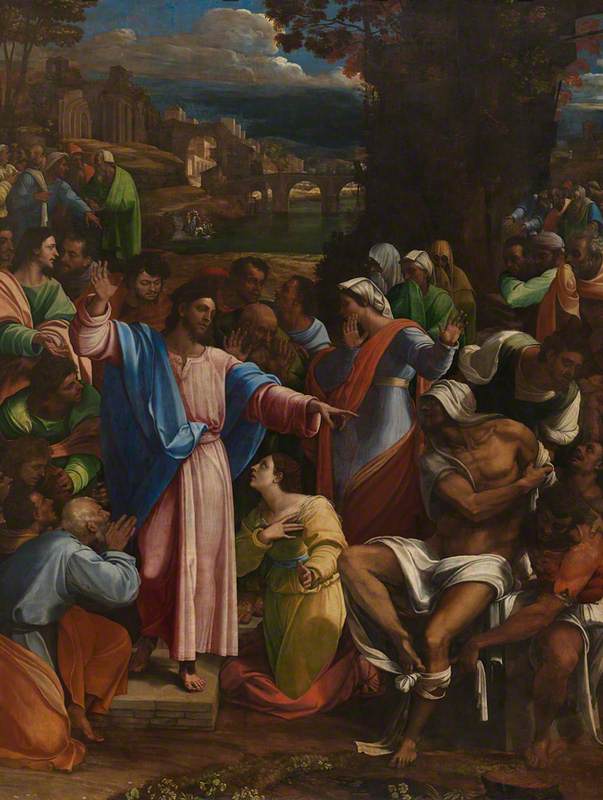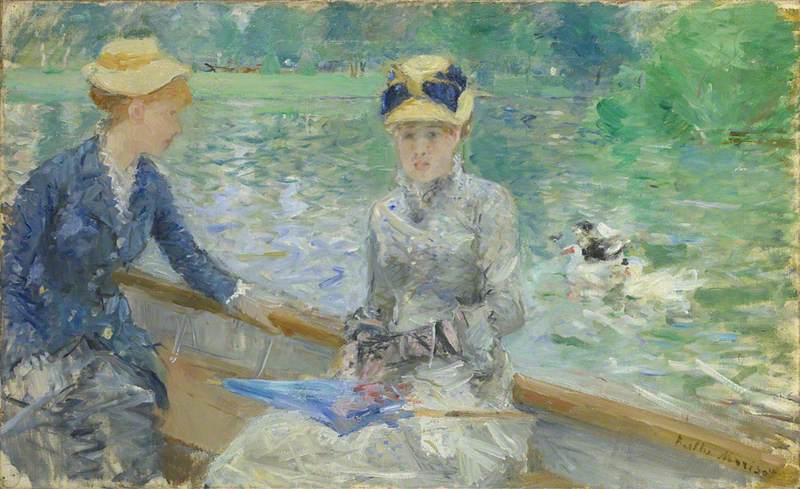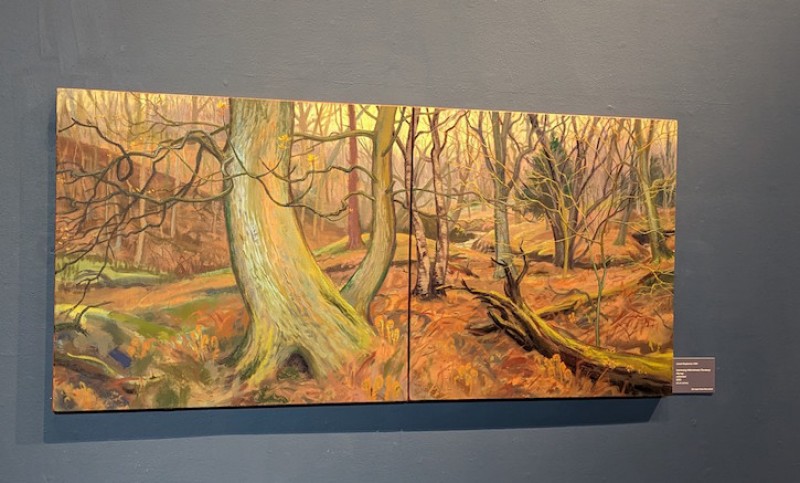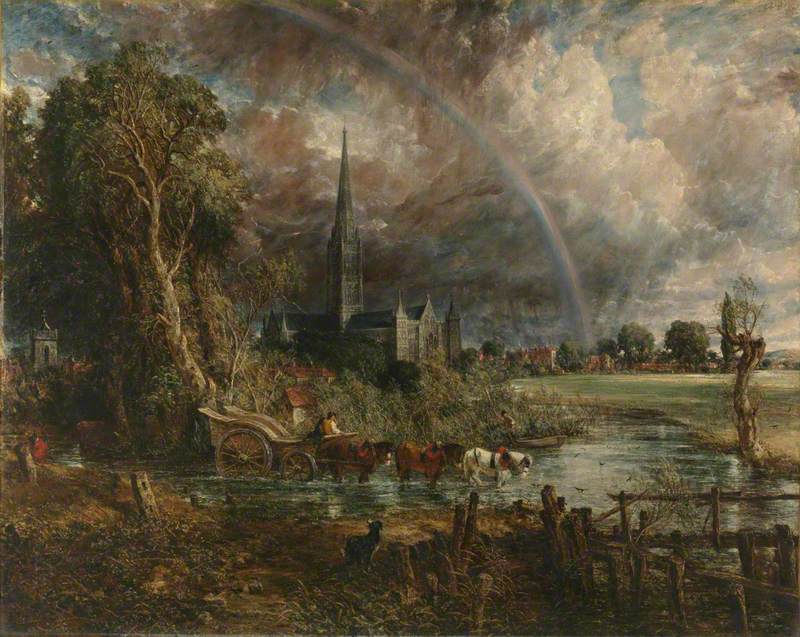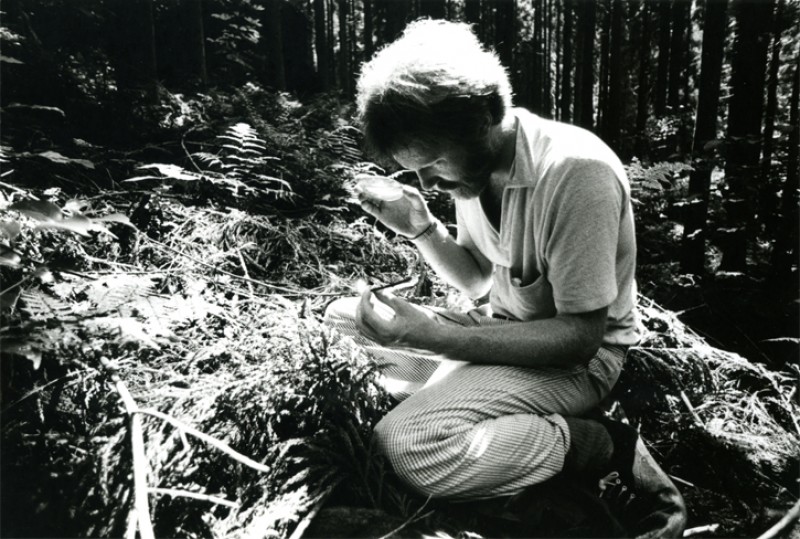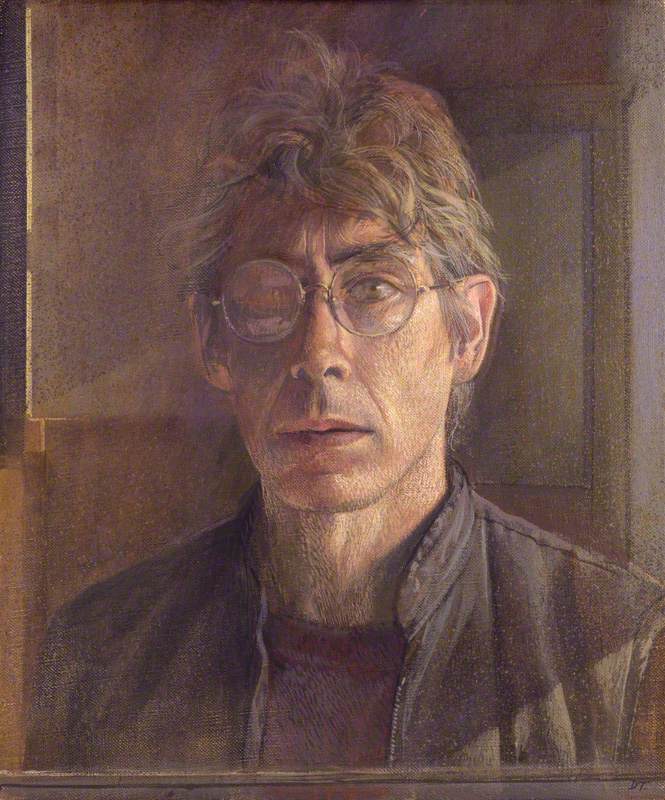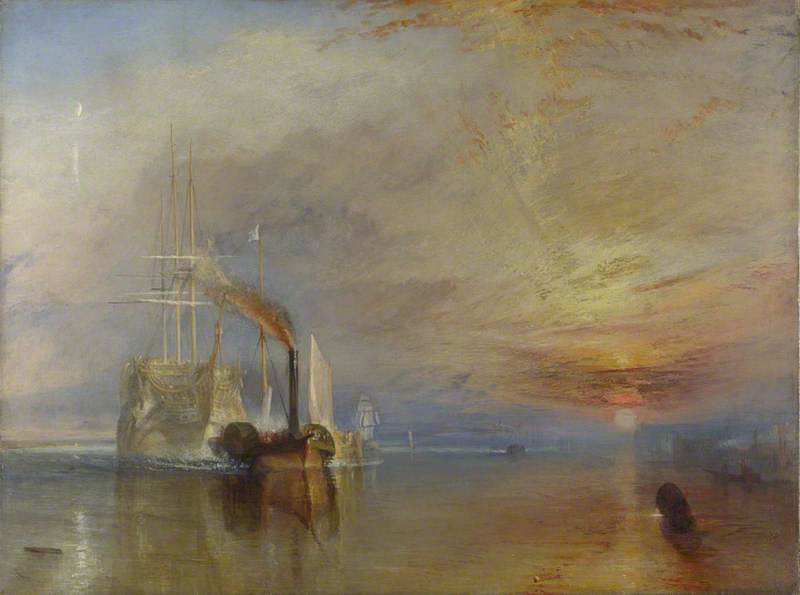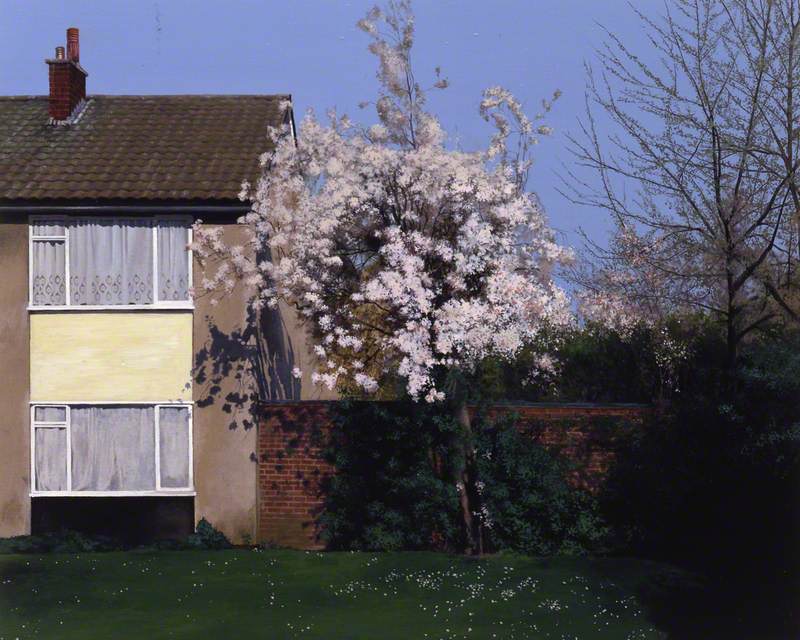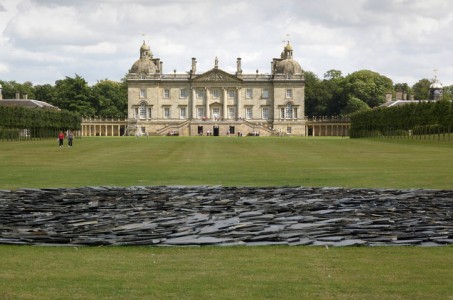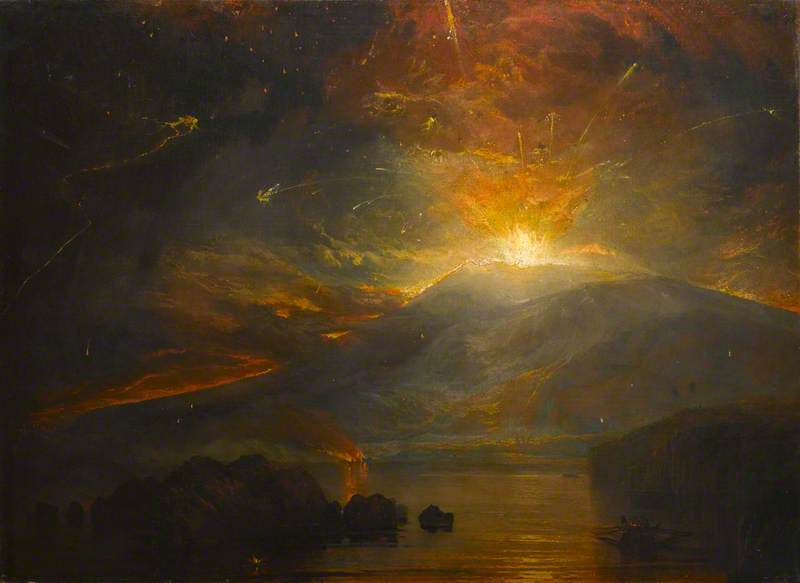George Shaw has been The National Gallery’s Associate Artist for the past two-and-a-half years, but a fan of the Gallery all his life.
George Shaw in Room 34 looking at NG1272 
Born in Coventry in 1966, Shaw is from a generation not known for its interest in Old Master painting. Despite his childhood and teenage years being spent on a Coventry council estate he would make regular day trips to London, armed with a sketchbook, to draw from works by artists he found inspiring, especially the mythological landscapes of Titian. Shaw, who was nominated for the Turner Prize in 2011, is recognised for his highly detailed approach and suburban subject matter. However, the National Gallery exhibition offers a very different perspective. The crumbling brick and concrete has been replaced by a more traditional woodland landscape repertoire.
Since 2014, Shaw has been based in a studio located in the heart of the National Gallery. With unrestricted access to the collection, Shaw explored the works out of hours at his leisure, drew from the pictures, observed the public, and found inspiration in great art for his own work. Shaw would arrive around 8am before the Gallery opened, during which he would choose a single painting and draw from it only once. The result of this two-year long residency will be displayed in George Shaw: My Back to Nature.
The Old Master, by George Shaw, 2015–2016, enamel on canvas, 46 x 55cm 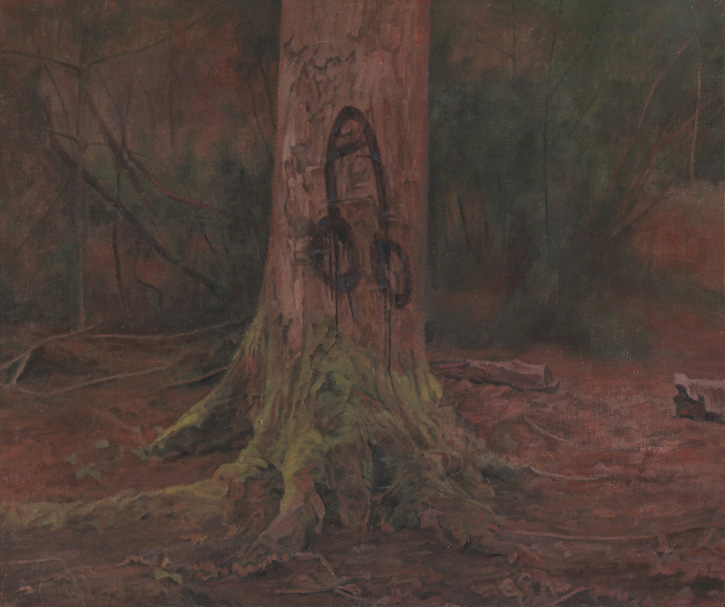
More than 50 new paintings and drawings – predominantly woodland landscapes – are included in the exhibition. They feature his investigation of the clash of cultures; classical stories linked with the traces of similar, timeless behaviour in the modern world, and the portrayal of religion. Titian’s Actaeon with Confessions of a Window Cleaner, Poussin’s Triumph of Pan with Donna Tartt’s The Secret History and John Constable’s Cenotaph to the Memory of Sir Joshua Reynolds with Hammer Horror films.
The first works Shaw made as Associate Artist were a series of meticulously rendered pencil copies of photographs from soft-porn magazines of the 1970s and 1980s, of the type he remembers stumbling across as a boy in the woods. It provides a sharp contrast to Shaw’s sketches he made at the National Gallery, which were often of paintings depicting the Christ’s Passion.
Frilly Knickers and a See-Through Bra (4), by George Shaw, 2015, pencil on paper 29.5 x 21cm 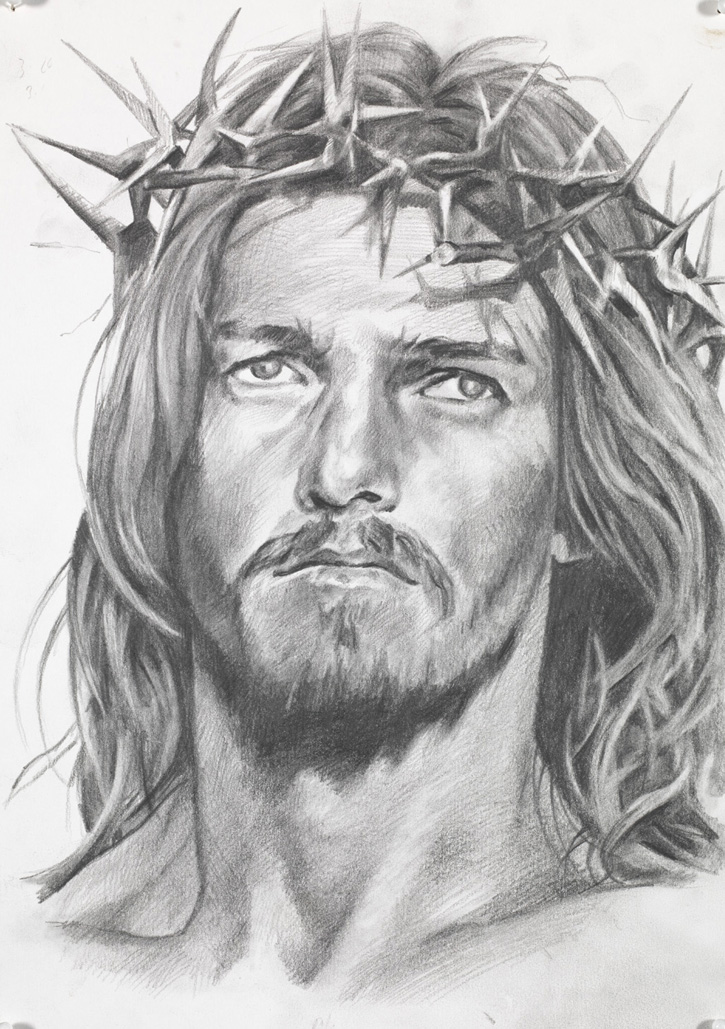
Some of the earliest works he made are a series of 14 self portrait drawings in the various poses taken up by Christ in traditional Stations of the Cross compositions. Although Shaw is not an artist known for working from the human figure, these drawings were an important step on his way to making the work for this exhibition. His favoured medium is Humbrol enamel paints, more often used to paint model trains and aeroplanes, which give his work a unique, almost photographic, appearance. Shaw concedes that he likes the fact they have no historical resonance.
George Shaw studied at Sheffield Polytechnic and Royal College of Art, London. Shaw’s previous exhibitions have included What I did this Summer (2003–2004) Woodsman (2009) and most recently Neither My Arse Nor My Elbow (2013) at the Douglas Hyde Gallery, Dublin.
Colin Wiggins, National Gallery, London
An extract from George Shaw: My Back to Nature by George Shaw and Colin Wiggins, published by the National Gallery, distributed by Yale University Press.
